Features of sanitary and decorative pruning of the vesicle
There are many ways to create an unusual decorative composition from a spirea (this is the other name for a bubbly): pruning to give the crown various shapes, a combination of varieties with different colors and configurations of leaves. The shrub has a decorative appearance all season: first, the site will be decorated with compact bushes with foliage of various shades, then clusters of flowers of white or pink color, and in the fall, fruits of the original shape are formed in their place. Landscaping designers have appreciated the plant - using only the different species of vesicle, they create interesting and original compositions.
Sanitary pruning
The bladder rarely gets sick and is damaged by insects, so sanitary pruning will not be very difficult. In early spring, remove all broken or dried branches, take a closer look - suddenly some bush caught an infection or was attacked by pests. After that, see if there are any shoots growing inside the bush. Such branches should also be cut off, they make the bush too thick - the wind will not pass through the foliage, and the air will stagnate. This is where you can finish your work.
In the fall, after leaf fall, check for damaged fragments, remove weak undeveloped shoots and any branches that make you suspicious. Only strong healthy processes will survive the winter cold, all the rest will weaken the bladderworm. Burn all the removed areas with every haircut, especially in the fall. If they are left until spring, the pests will definitely arrange for themselves wintering on dry wood.
It is not necessary to insulate the spirea after the autumn pruning. Only young and weakened specimens are harbored.
Sometimes sanitary pruning has to be done in the summer. When you see a damaged shoot, immediately remove it so as not to spoil the decorative appearance of the plant and not create conditions for the development of infection. If a thick branch is cracked and needs to be cut down, treat the wound with garden varnish or a special putty, from these drugs the damage will heal faster. Small sections do not need to be processed, they will heal on their own.
Spirea decorates the site with beautiful leaves of different shades. Occasionally, the hybrid plant will produce a branch covered with green foliage. Do not expect that with age, young leaves will change color and will not differ from the rest of the crown. Such fragments must be removed: they will no longer change the color, and spoil the look of the bush.
Decorative haircut spirea
Some ornamental trees and shrubs do not require the formation of a crown - but the bladder should be cut, even if you do not like clear contours and prefer the natural beauty of plants. Unlike thuja and other conifers, which in any case will grow many shoots and form a dense crown, the spirea itself will not give such beauty. She will release several branches, strongly stretching in length, and consider her mission completed. Neither a hedge, nor a flower garden decoration from such a bush will work.
Before starting work, keep in mind that you will have to cut branches of different thicknesses, so collect and sharpen all the necessary tools:
- knife;
- gardening scissors;
- secateurs;
- hacksaw.
To stimulate the growth of new shoots, old shoots should not be allowed to stretch too much. After the end of flowering, shorten the branches by 1/3 of the young bushes. In the second year and all subsequent seasons, the shoots should be cut off by 2/3 of their length. The bush will take on a compact, even shape, and the outline depends on your goals. The plant tolerates shearing well and will immediately begin to release new shoots.The crown will become thicker, but the branches are growing so actively that sometimes it is necessary to adjust the shape every month.
Sometimes the owners diligently cut off old shoots, follow all the rules when forming the crown, and the bush remains loose, gives very few new shoots. It is not a poor haircut that is to blame, but poor soil or improper care. The plant is unpretentious, but it also needs moisture and nutrients. Eliminate your mistakes, otherwise no amount of pruning will give the bladder a decorative look.
Advice
If during sanitary or decorative pruning it is necessary to remove young strong shoots, you can use them to propagate the bush. Prepare cuttings with 2-3 internodes, cut off all the leaves so that there is no intense evaporation of moisture, and plant in the sand. When you see swollen young buds, plant the branches in a permanent place. Most of all, they will enjoy growing next to the maternal vesicle from which the processes were taken.
Shrub rejuvenation
Old bushes lose their decorative effect. If you notice that the foliage has become not so thick and fresh, the bush blooms sparsely, and the inflorescences have become smaller, then the bladder needs rejuvenating pruning. This procedure is usually performed 5-6 years after planting. Stock up on garden pitch and a saw in advance, since thick trunks will have to be removed.
To stimulate the development of new shoots, you need to carry out anti-aging pruning. It is best to do this work in the spring, before the buds begin to bloom, or in the fall, when the leaves fall. Shoots that, from age, can no longer release dense foliage and lush inflorescences, must be cut down to the ground. All other trunks are cut before the first shoot branches off.
Large-scale pruning weakens the bush - provide it with good care, timely watering and feeding. If the procedure was carried out in the fall, insulate the bladder with straw or covering material. In regions with frosty winters with little snow, it is better to protect from cold weather and spirea, which was rejuvenated in spring.
The use of spirea in landscape design
The shoots of the shrub grow very quickly, after cutting, the plant will become thick and lush in one season. This quality is especially convenient for novice summer residents. If in the first year you formed a crown unsuccessfully, by autumn all errors will be closed with young branches, and in the spring you will give the bubblegrowth the desired outline.
Ornamental bushes are used for different elements of country design:
- devices of green fences;
- decorating fountains, gazebos, sculptures;
- creating compositions from several plants or single bushes;
- as a decorative element in flower beds and flower beds.
If the spirea is used for a hedge, you cannot wait for the end of flowering: the fence will lose its correct shape, young branches will stick out in all directions, like the needles of a hedgehog. The haircut should be done in early spring, before the buds have blossomed. After about a month, you will see branches sticking out again. Cut them off in time so that the fence does not become shapeless. The fence can be made even, alternating bushes with different colors of leaves, or you can make ledges, waves, turrets. If you supplement the vesicle other ornamental shrubs or trees, the scope for imagination will become even wider.
From spreading species, the branches of which first grow upward and the ends go down, you can create a dense, wide bush. Cut the lower branches to about 40 cm from the ground, trim the tips of the remaining shoots. Depending on the density of the shoots, you can create a solid "umbrella" or leave 4-5 trunks and get an octopus-like figure. For a crown of this shape, viburnum spiraea is well suited. On an empty lawn, randomly arrange a few bushes, and the site will take on an original look. It is even more interesting if, among the drooping species, planting plants with shoots sticking upward.
Advice
Plant a few Bubbleweed bushes around the fountain. Its spreading branches drooping at the ends will repeat the shape of the jets.
When the bush becomes thick enough, its crown can be given any shape. Tall, rounded bushes can be made the center of a flower garden or planted near the porch. If you are going to give the vesicle the shape of a geometric figure with straight edges, be prepared for the fact that you will have to adjust the crown very often. The same problem will arise if you want to make green sculptures: young shoots will be knocked out of the contour from one side or the other, and the pruner will become your permanent tool.
Landscape designers offer other options for the use of the bladder, each of which requires its own crown shape.
- Border. If, instead of a high green fence, arrange a low fence, it will not obscure the view of the site, but will emphasize the contour of the paths, highlight the border of other structures.
- Alpine slide. Dwarf varieties are suitable for decorating this object. Dangling shoots will create the effect of a lace bedspread.
- Array. If you want the bladder to require minimal maintenance, plant a group of bushes close to each other. An even top will create the effect of a voluminous green carpet laid on the lawn.
Sometimes novice gardeners do not grow ornamental shrubs on the site, because they do not know how to cut them. In fact, you can learn this in one season. Start with the vesicle, its shoots grow very quickly. Like a fabulous monster, 3 new shoots will grow in place of one incorrectly cut branch. The next year, you yourself will not be able to notice your mistake. Do you want to learn how to create green fences, crowns of various shapes? Plant a spirea, this is the most suitable material for experiments.
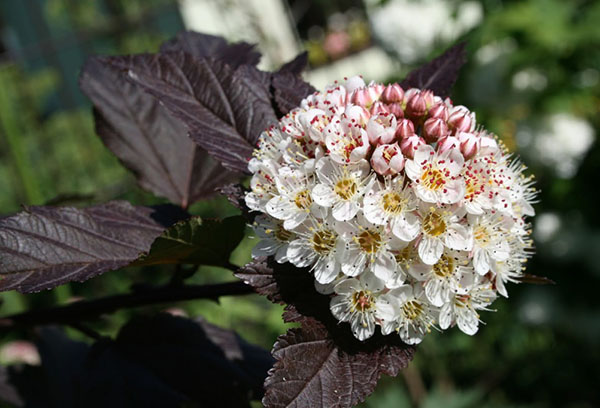
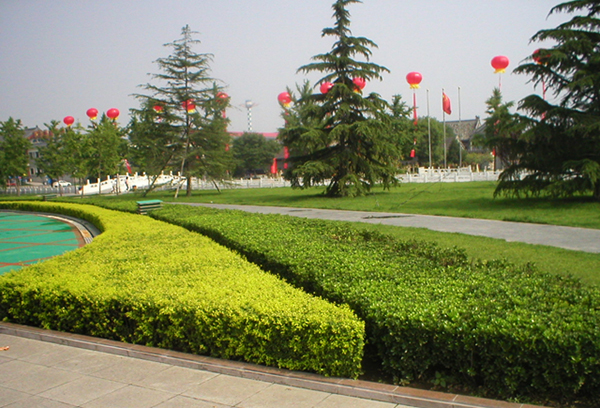
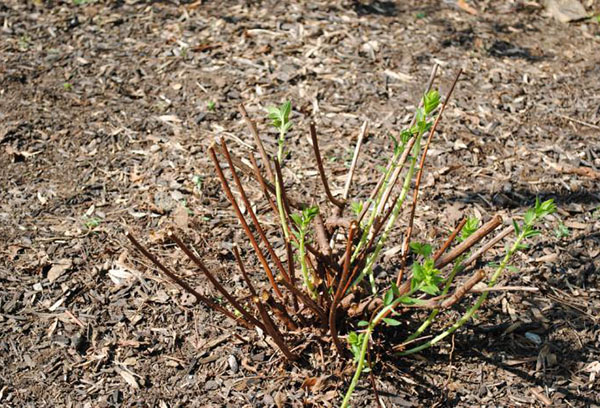
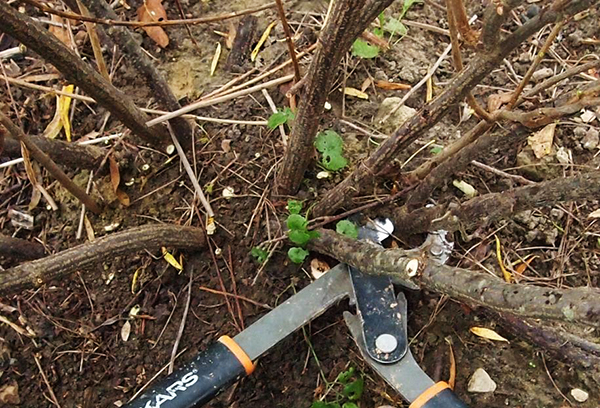
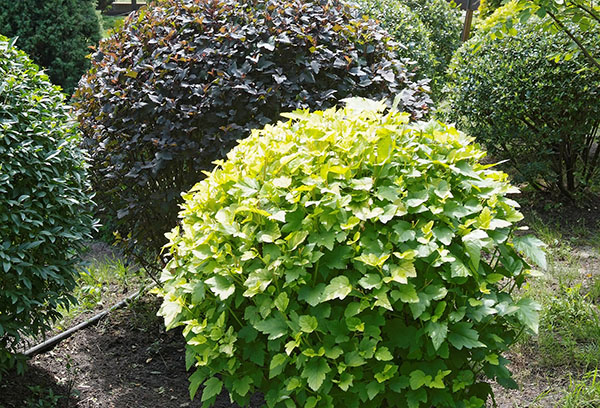
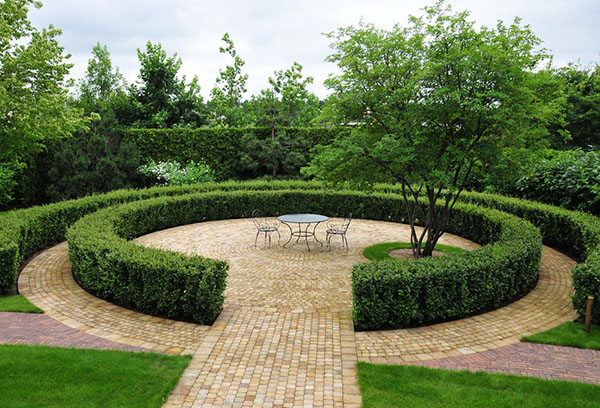
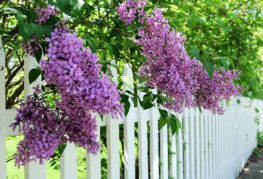
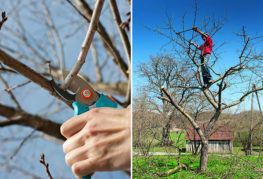
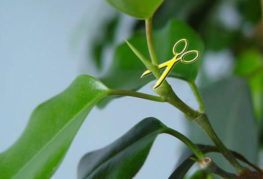
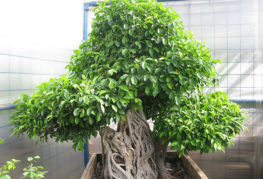
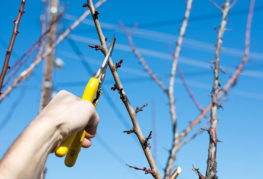
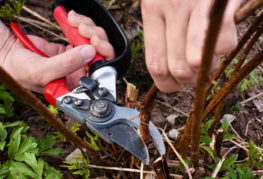
Spiraea and vesicle are two different shrubs